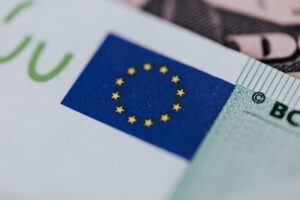The Fit for 55 is a set of reforms that was presented by the European Commission in 2021. The Package is part of the European plan to tackle climate change, the so-called Green Deal, whose goal is to achieve net-zero emissions on EU territory by 2050. With the Fit for 55, the European Commission set a further, intermediate target: That of reducing emissions by at least 55 per cent – this explains the package’s name – by 2030 compared with 1990 levels.
The Emission Trading System (ETS)
To achieve its goals, the Fit for 55 comes with a series of tools. Among these, we find the Emissions Trading System (ETS). This system sets a cap on greenhouse gas emissions in the EU territory, which will be progressively lowered each year. With the ETS, emissions will be monitored thanks to permits that are given to European factories. These permits can also be traded between two or more factories, so that those factories with lower emissions levels can sell their permits to those that emit more – provided that total emissions do not exceed the limits imposed by the ETS (cap and trade system). The EU Emissions Trading System was established with the Directive 2003/87/EC and came into force in 2005, before being updated with the Fit for 55 package which provides for its extension to several other European productive sectors and the reduction of the permit quota, in order to increase the system’s efficiency.
On the one hand, the Fit for 55 strengthens the ETS by extending it to new sectors such as international aviation and maritime transportation. On the other hand, the system is also reinforced by the creation of supplementary, self-standing emission trading systems to be used in other sectors such as buildings and road transport. Additionally, EU Member States must autonomously monitor and comply with emissions target in those sectors that are not regulated by emissions trading systems (agriculture, waste, or domestic maritime transport). This commitment by EU countries is officially administered through the effort sharing regulation.
Fit for 55: Tools to safeguard industrial competitiveness and support households
Another tool of EU’s Fit for 55 is the Carbon Border Adjustment Mechanism (CBAM), with which international firms in carbon-intensive sectors (steel, cement, fertilisers) must pay duty to import goods that are produced outside the Union. Through this mechanism, the EU aims to protect European factories, as these will inevitably face increasing production costs as a consequence of the ETS, and to prevent that the emissions reduction on EU soil entail an increase in non-EU countries, especially as a consequence of production relocation to countries where climate policies are less strict. With the CBAM, the EU aims to ensure that competitiveness and innovation of the European industry remains high during the ecological transition. To protect and support businesses, as well as households, facing social impacts that may stem from the transition, the EU envisaged the institution of a social climate fund adding up to €86 billion.
Fit for 55: Tools for the transport and building sectors
Other goals of the Fit for 55 concern the sector of transports. The REFuelEU Aviation and FuelEU Maritime propositions provide for the use of sustainable fuels in aviation and maritime transportation sectors, which are also regulated by the emissions trading system. As for private vehicles, the package envisaged to lower emissions from cars and vans by ending the sale of CO2-emitting cars starting from 2035.
Finally, the Fit for 55 package provides for several measures to change and update existing norms, such as the Energy Efficiency Directive, to improve the building’s energy efficiency and decrease energy consumption, and the Renewable Energy Directive, which promotes an increase of the renewable energy sources in the European energy mix to 42.5 per cent.
Photo by Son Tung Tran






